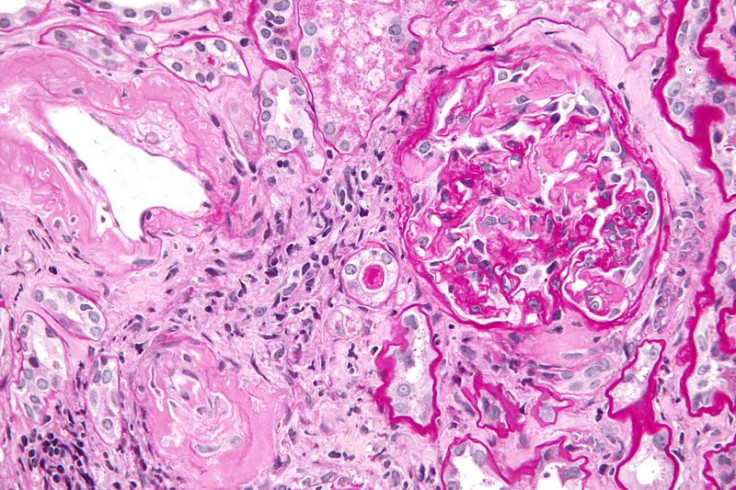What is amyloidosis? The rare genetic disease that killed Martin McGuinness
Amyloidosis is difficult to diagnose so is often only caught later. Without treatment it eventually leads to death.

Irish politician Martin McGuinness has died at the age of 66 from a rare and serious disease called amyloidosis. He had been diagnosed with the condition just a few weeks earlier and died at Derry's Altnagelvin Hospital surrounded by his family.
It is thought McGuinness was suffering from a genetic form of amyloidosis linked to his mother's home town of Buncrana, Co Donegal.
ATTR amyloidosis is one of the few hereditary forms of the disease that was first identified in an Irish family in Co Donegal in 1986 – now one in every 100 people there possess the mutation that can lead to the disease.
What is amyloidosis?
The disease is caused by a build-up of proteins in the form of abnormal and insoluble fibres – known as amyloid fibrils. These accumulate in the spaces in the tissues of the body and while they can be confined to a single part, often they become widely distributed in many different organs. The latter is known as systematic amyloidosis. Without treatment, this can lead to organ failure and death – sometimes within just a year.
Symptoms of amyloidosis vary widely and this is why it is so difficult to diagnose. Confirming the amyloid tissues is challenging, and there are around 30 different proteins that can be involved – meaning there are many different types of amyloidosis.
What goes wrong with the proteins?

Proteins normally start as a strip of amino acids that fold into 3D shapes – allowing them to perform the function they are supposed to. However, in amyloidosis the protein folding goes wrong and they end up getting bunched together. This means they cannot breakdown so easily, resulting in a build-up within tissues and organs. This build-up stops the organs from working properly and, over time, causes problems.
In the most common form of the disease, there is an abnormality in the plasma cells in bone marrow, resulting in the excessive production of proteins called light chains – and these are the single strips of amino acids.
A similar system is involved in the development of Alzheimer's – a hallmark of the disease is the build-up of amyloid plaques in the brain.
How many people are affected?
There are around 600 new cases of amyloidosis in the UK every year. The most common type is AL amyloidosis – which can affect any organ and the symptoms of which depend on the affected organ.
Most of the time AL amyloidosis affects the kidney, which can result in kidney failure. Symptoms of this include weakness, loss of appetite and fluid retention. If amyloidosis affects the heart, it can lead to heart failure – with symptoms including shortness of breath and oedema.
Other symptoms include:
- Feeling faint
- Numbness or tingling in the hands or feet
- Frothy urine
- Erectile dysfunction
- Diarrhoea or constipation
- Enlarged tongue
- How is it diagnosed?
The generalness of the symptoms – and that they are dependent on which part of the body is affected – makes diagnosing amyloidosis very difficult.
Doctors normally have to take a biopsy from the affected part of the body and send it off for analysis in a laboratory. Here, they check for amyloid proteins.
The type of amyloidosis McGuinness was digagnosed with (ATTR amyloidosis) specifically relates to the protein transthyretin (TTR).
How is amyloidosis treated?
Treatment will depend on the organ or tissues affected. However, there are currently no treatments that can directly remove the amyloid deposits. Instead, treatment prevents further build-up of the proteins, giving the body time to try to clear the deposits already there. Normally, this involves chemotherapy to damage the faulty bone marrow cells, to prevent the development of abnormal proteins.
If the disease has progressed, doctors will also treat the affected organ – so if the kidney is failing, this may involve having to have a kidney transplant.
Outlook
Survival largely depends on diagnosis and treatment. Before treatments were available, most people with amyloidosis died within months. But now most people survive for several years, if not more than a decade after diagnosis.
© Copyright IBTimes 2025. All rights reserved.






















